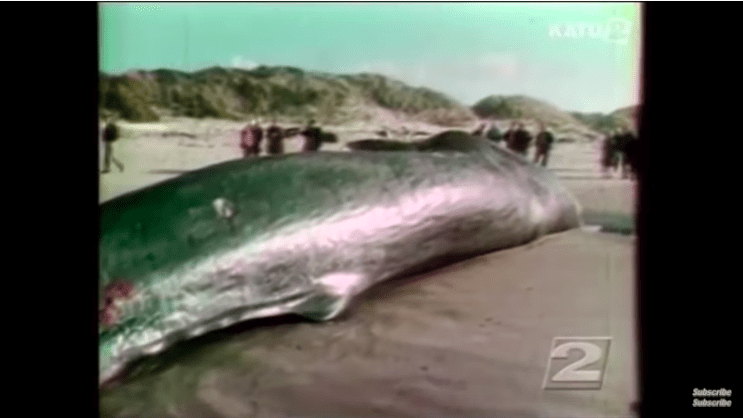Trending Now
When kids are in high school, they almost all think history class is the worst. One of the reasons for this, I’m sure, is that the worst teachers gravitate to that subject, but listen.
If teachers taught the parts of history that are actually interesting, I’m convinced it would magically turn into everyone’s favorite subject.
So, if you’ve never heard of the exploding whale incident of 1970, prepare to be amazed.

Image Credit: YouTube
It’s been nearly 50 years since someone thought “hey, dynamite seems like a good way to get this dead whale off the beach,” and now a beautiful park on the Oregon coast has been dubbed “Exploding Whale Memorial Park.”
That whale may not have died well, but at least he’s being remembered, eh?
It was November of 1970 when an 8-ton sperm whale beached itself. It had already expired when it was found, and the case was turned over to the Oregon highway division. The Navy advised them to blow the whale up, aiming it toward the ocean, where plenty of smaller animals would be delighted at the already-cooked meal.
They set to figuring out how much dynamite might be required to accomplish such a grisly feat, and, well…in the end, I think they probably wished they’d consulted a few experts.

Image Credit: YouTube
Like businessman Walt Umenhofer, perhaps, who was trained in using explosives during World War II. He happened to be driving near the scene at the time (in his brand-new car), and told the highway division he didn’t believe they’d gotten their calculations right. They’d stuck about 20 crates under the carcass, and he advised them to go with a lot fewer maybe 20 sticks) if they wanted to push it out to sea – or a heck of a lot more if they wanted to vaporize the entire thing.
Project manager George Thornton waved him off, telling reporters “well, I’m confident that it’ll work, the only thing is we’re not sure how much explosives it’ll take to disintegrate this thing.”

Image Credit: YouTube
The answer was more than they had, because when the whale exploded, massive pieces of blubber flew everywhere – onto buildings, cars in parking lots, and people suddenly caught in an unexpected and gory blubberstorm.
One journalist, Paul Linnman, said at the time that “explosions in the movies usually look like a blast of fire and smoke. This one more resembled a mighty burst of tomato juice.
Poor Walt Umenhofer, who I assume was too disgusted to muster an “I told you so,” watched his car get smothered in whale debris. It caved in the roof and he required a shovel to remove all of the parts.
“My insurance company’s never going to believe this,” he said afterward.
The project manager refused to admit any mistake, saying that an unknown hole under the whale was what caused gawkers to be sprayed in whale innards.
Basically, you can see why this incident would grab kid’s attention in schools – perhaps part of a math lesson, even, about how to calculate force needed per ton or something? I’m not a math person, but I guarantee this story would have caught my attention.
For now, though, I applaud the people of Oregon for realizing there was never really any other name for this beach.
Live in infamy, giant sperm whale. You’ve given us more than we’ve deserved.







